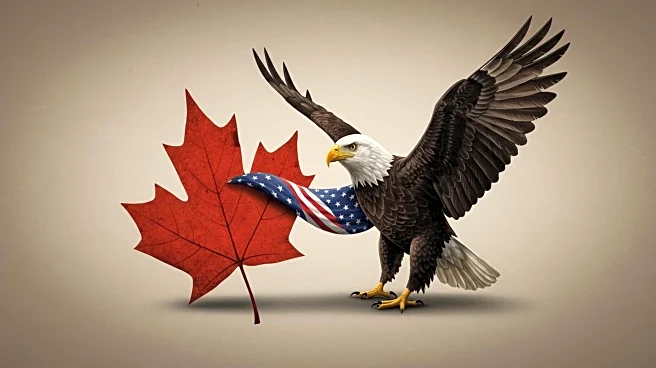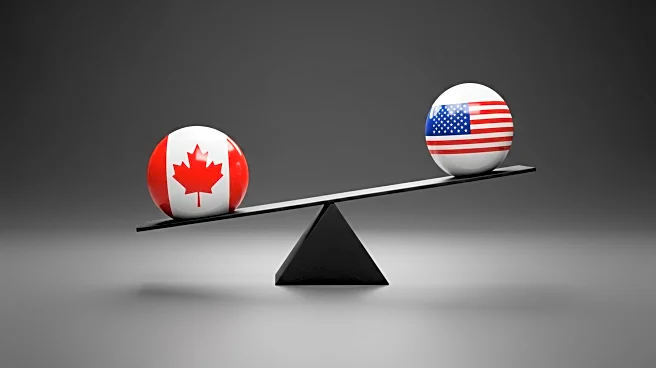What is the story about?
What's Happening?
Canada has announced it will align its tariff exemptions with those of the United States under the United States-Mexico-Canada Agreement (USMCA). Prime Minister Mark Carney stated that this move is intended to ease trade tensions and facilitate further negotiations with the U.S. The decision comes after discussions between Carney and President Trump, where they agreed on the importance of maintaining a strong trade relationship. The USMCA, which replaced NAFTA, is crucial for Canada as over 75% of its exports are directed to the U.S. Despite this alignment, some Canadian sectors, such as steel and aluminum, remain subject to U.S. tariffs, which continue to impact the Canadian economy.
Why It's Important?
The decision to match U.S. tariff exemptions is significant for Canada's economic stability, given its heavy reliance on the U.S. market. By aligning with U.S. exemptions, Canada aims to preserve the benefits of the USMCA, which is vital for its export-driven economy. However, this move has sparked criticism from Canadian political and labor leaders who view it as a concession to U.S. demands. The ongoing tariffs on key Canadian industries like steel and aluminum highlight the challenges in achieving a fully reciprocal trade relationship. The outcome of these negotiations could influence future trade policies and economic strategies for both countries.
What's Next?
As the USMCA is up for review in 2026, both Canada and the U.S. are expected to engage in further negotiations to address outstanding trade issues. The Canadian government will likely continue to advocate for the removal of remaining U.S. tariffs on its exports. Meanwhile, Canadian industries affected by these tariffs may seek government support to mitigate economic impacts. The political discourse in Canada may intensify as opposition leaders and labor unions push for a more assertive stance against U.S. trade policies.
Beyond the Headlines
The alignment of tariff exemptions under the USMCA reflects broader geopolitical dynamics, where trade agreements are increasingly used as tools for economic leverage. This development underscores the delicate balance countries must maintain between protecting domestic industries and fostering international trade relations. The situation also highlights the potential for trade agreements to evolve in response to shifting political and economic landscapes.
AI Generated Content
Do you find this article useful?












